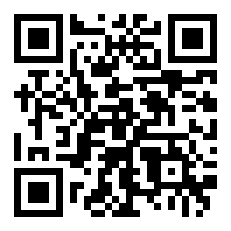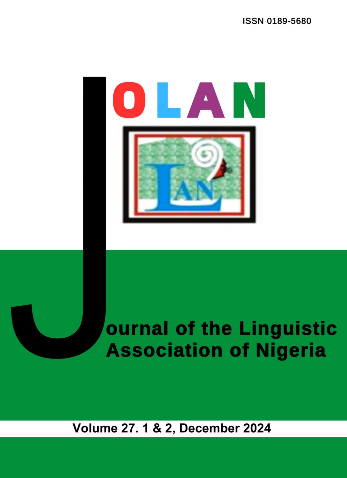Verbal and Visual Interface in Select Nigerian Pop Music Videos
Keywords:
Multimodality, Semiotics, Pop music, Systemic functional semioticsAbstract
That pop music is one of the popular genres of music with much rhythm and harmony and its emphasis on romantic love songs is not news. What needs clarification is the level of interface in terms of meaning making between the verbal and visual aspects of pop music videos. This study thus investigates visual-verbal interface in some Nigerian pop music videos in order to determine the extent to which both visual and verbal modes encode and enhance meanings in the music. Three popular Nigerian pop music artists, Wizkid, Davido and Iyanya were chosen for their top status in the top-ten music videos in Nigeria in 2019. Two of their songs each were randomly picked out of the 49 music tracks produced by Wizkid, 60 tracks of Davido and Iyanya’s 22 singles. Findings indicate that, apart from paying attention to semiotic resources that are available in communicative modes, the variety of modes and their modal affordances, including multimodality account for how each mode interacts with others and how they are orchestrated in specific contexts to produce meaning. An understanding of all the modes and their meaning making properties thus brings about clearer/better understand of texts.
References
Acheoah, J. E. 2012. A pragmatic analysis of selected sign-board adverts in Nigeria. Online International Journal of Arts and Humanities 1.3: 34-42.
Almeida, D. 2009. Where have all the children gone? A visual semiotic account of advertisements for fashion dolls. Visual Communication 8.4: 481-501.
Ariyo K.S. 2013. A Multimodal Discourse Analysis of Selected Paronama of TELL Magazine. Thesis. English. Adekunle Ajasin University.
Baldry, A. 2000. English in a Visual Society: Comparative and Historical Dimensions in Multimodality and Multimediality. Multimodality and Multimediality in the Distance Learning Age. Eds. A. Baldry. Campobasso: Palladino. 41-90.
Eco, U. 1976. A Theory of Semiotics. Bloomington Illinois:Indiana University Press,
Feldman, T. 1994. Multimedia. London: British Library Board.
Guo, L. 2004. Multimodality in a Biology Textbook. Multimodal Discourse Analysis. Ed. K.L. O’Halloran. London: Continuum. 196–219.
Halliday, M.A.K. 1978. Language as a social semiotic: the social interpretation of language and meaning. London: Edward Arnold.
Halliday, M.A.K. 1994. An introduction to functional grammar. 2nd ed. London: Edward Arnold.
Halliday, M. A. K. & Hasan, R. 1976. Cohesion in English. London: Longman.
Halliday, M. A. K. and Hasan, R. 1985. Language, Context and Text: aspects of language in socialsemiotic perspective. Victoria, Deakin University Press.
Hodge, R. & Kress, G. 1988. Social semiotics. London, UK: Polity Press.
Jewitt, C. 2003. Re-thinking Assessment: Multimodality, literacy and computer- mediated learning. Assessment in Education: Principles, Policy & Practice. 10.1: 83–102.
Jewitt, C. 2009. Different approaches to multimodality. The Routledge handbook of multimodal analysis. Ed. C. Jewitt. London: Routledge. 28-39.
Kress, G. 1997a. Visual and verbal modes of representation in electronically mediated communication. Page to Screen: Taking Literacy into the Electronic Era The potentials of new forms of texts. Ed. I. Snyder. St Leonards, NSW: Allen & Unwin. 53-79.
Kress, G. 2000a. Design and transformation: New theories of meaning. Multiliteracies: Learning literacy and the design of social futures. Eds. B. Cope & M. Kalantzis. Melbourne: Macmillan. 153-161.
Kress, G. & van Leeuwen, T. 1996. Reading images: the grammar of visual design. London, New York: Routledge.
Kress, G., & Van Leeuwen, T. 1998. Front Pages: (The Critical) Analysis of Newspaper Layout. Approaches to Media Discourse. Eds. A. Bell and P. Garrett. Oxford: Blackwell. 186-219.
Kress, G. & Van Leeuwen, T. 1990. Reading images. Geelong, Victoria: Deakin University Press.
Kress, G. & Van Leeuwen, T. 2001. Multimodal Discourse – The Modes and Media of Contemporary Communication. London: Arnold.
Kress, G. and van Leeuwen, T. 2006. Reading Images: The grammar of Visual Design. 2nd Ed.London New York: Routledge.
Lemke,,J. L. 1998. Multimedia literacy demands of the scientific curriculum. Linguistics and education. 10.3: 247-271.
Lemke, J. 1998a. Metamedia literacy: transforming meanings and media. Handbook of Literacy and Technology: Transformations in a Post-typographic World. Eds. D. Reinking, M. McKenna, L. Labbo & R. Kieffer. Mahwah. New Jersey: Lawrence
Lemke, J. 1998b. Multiplying meaning: Visual and verbal semiotics in scientific text. Reading science: Critical and functional perspectives on discourses of science. Eds. J. R. Martin & R. Veel. London: Routledge. 87-113.














